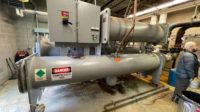"Energy efficiency loans are proving to be a winning investment in a time of economic uncertainty. Based on these findings, now is the time to scale-up to serve many more homeowners and businesses," said ACEEE Executive Director Steven Nadel.
Energy efficiency loan programs finance building upgrades by providing funding directly to building owners or managers. These projects lower energy bills and reduce annual energy costs by an average of 12-17%. Small commercial banks and credit unions have led in offering these energy efficiency loan products, often working with utilities as well as local and state governments. The programs evaluated by the ACEEE report have loaned out over $1.5 billion. Through the use of subsidies and energy program funds, interest rates for borrowers averaged 3-5% annually.
Existing loan programs have only begun to scratch the surface of the potential market. The programs reviewed represent the largest energy efficiency financing efforts in the nation yet participation rates are most often less than 0.5% of the targeted customer class. "These low participation rates indicate there is a vast untapped customer base still available in this market. I think we'll see increased private investment as big banks adopt the model that community banks and credit unions have found so profitable," observed Sara Hayes, lead author of the report.
The reasons for the lack of investment by large banks up to this point appears to be a lack of centralized information on how the loans are performing and the inability to evaluate default risks. Furthermore, each loan tends to be small, averaging approximately $9,000 for residential projects and $73,000 for commercial/industrial/public projects. The low dollar amounts of these loans suggests that in order to attract the interest of large financial institutions, the loans would need to be packaged for resale on the secondary market.
"The financial sector has shown itself to be extremely adept at scaling programs that serve customer needs well. Consider, for example, the growth in the performance contracting and green building finance markets," said Joel Freehling, Senior Energy Finance Consultant at Shaw Environmental & Infrastructure and author of the first paperin ACEEE's series on energy efficiency financing. "It's finding the right place to start and locating the right partners that often stymy further growth in the energy finance field. If these hurdles can be overcome, we could see huge growth in these programs."



